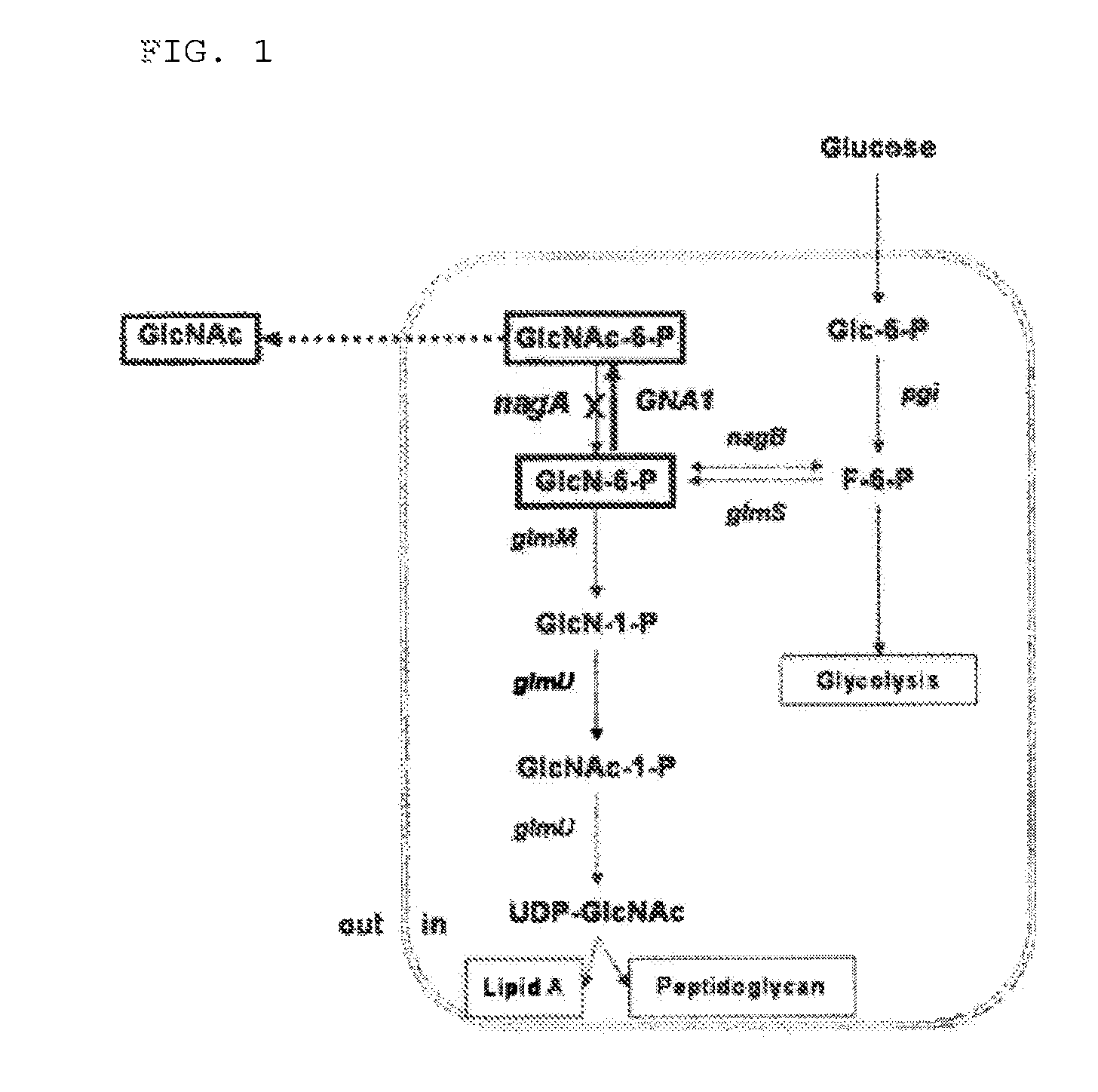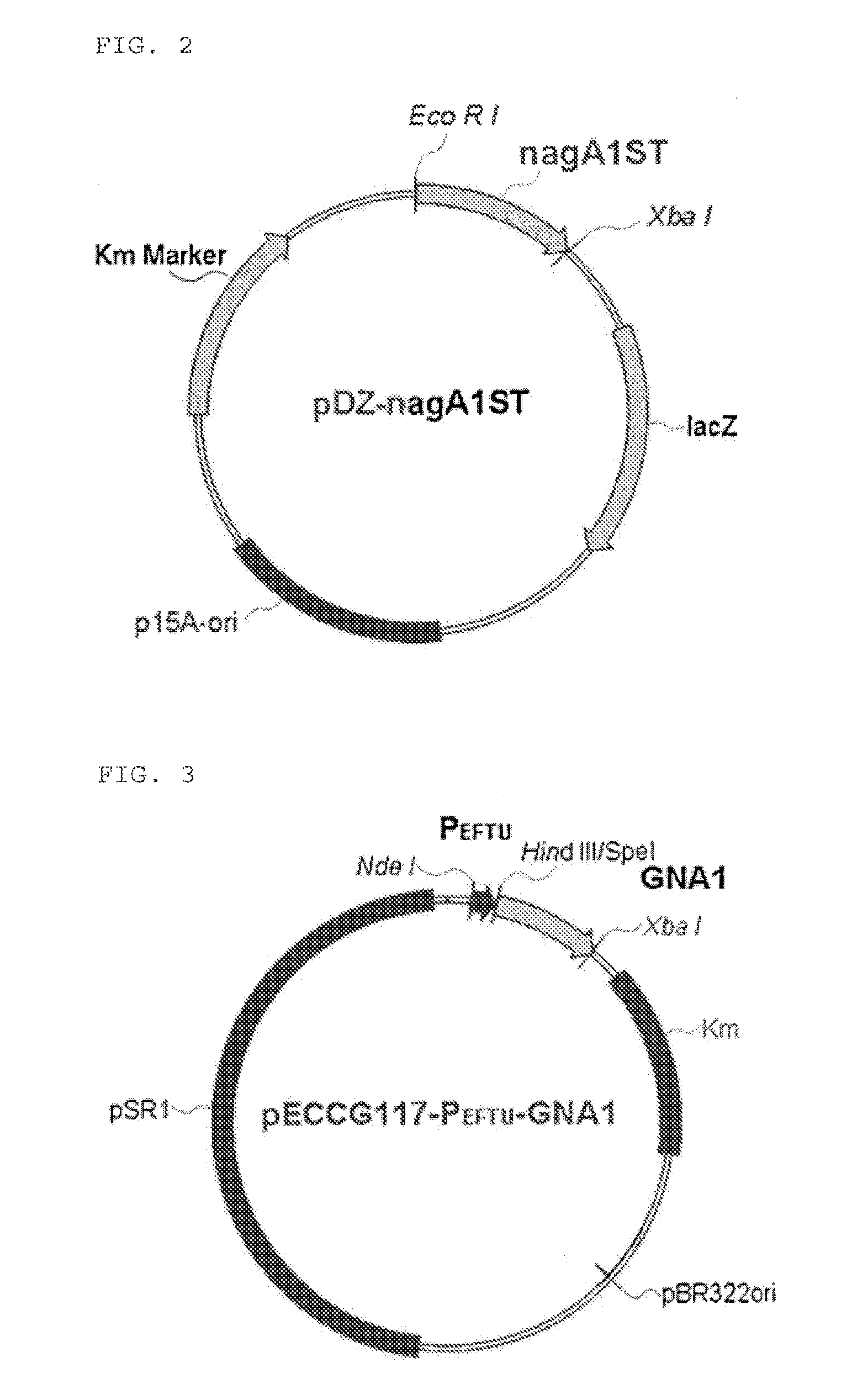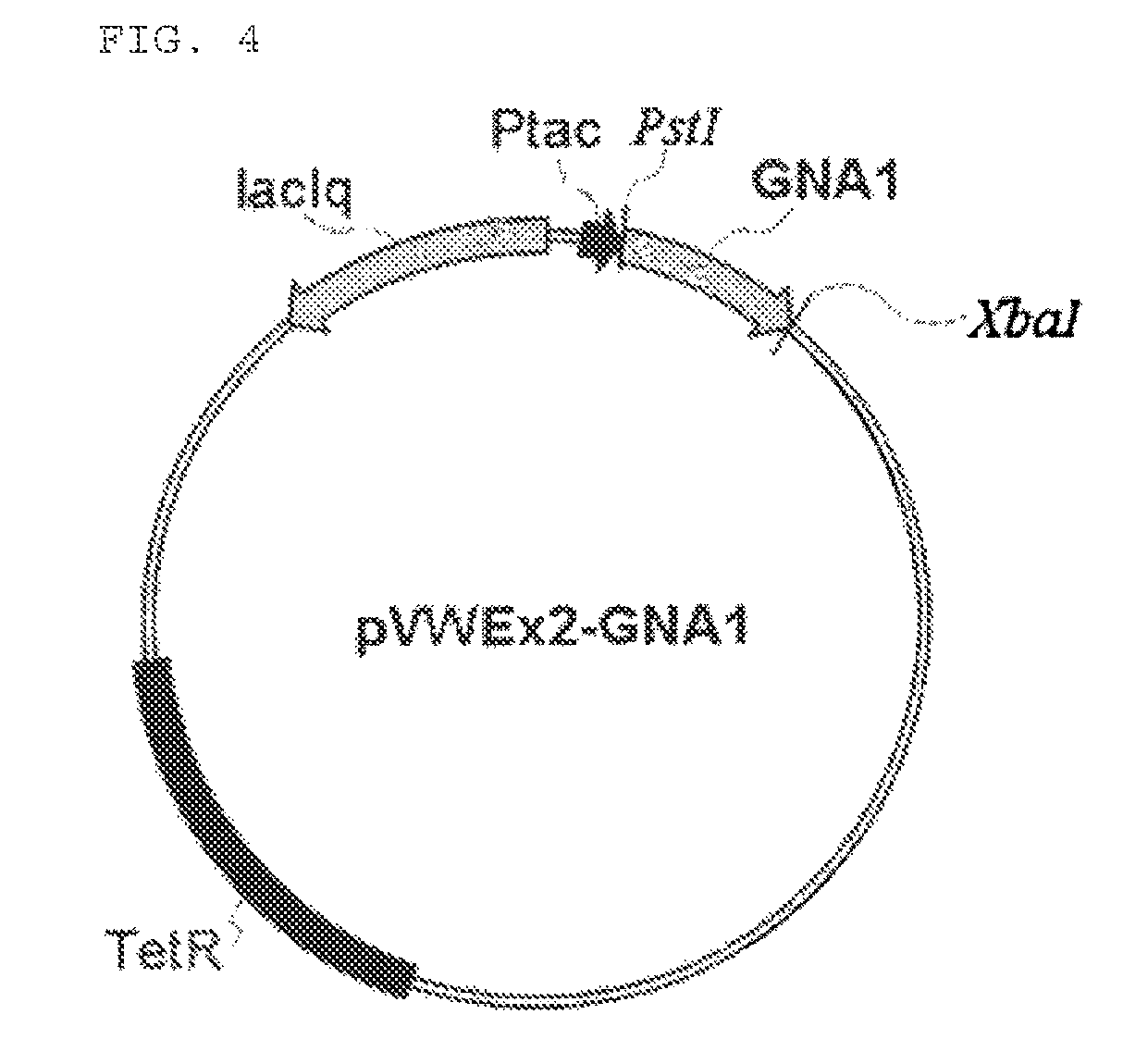Corynebacterium genus microorganism having ability to produce N-acetyl glucosamine and method for producing N-acetyl glucosamine or glucosamine using the same
a technology of n-acetyl glucosamine and microorganisms, which is applied in the direction of enzymology, transferase, bacteria-based processes, etc., can solve the problems of large volume of waste, low glucosamine content of arthropod refuse and fungal biomass, and unstable glucosamine as a free bas
- Summary
- Abstract
- Description
- Claims
- Application Information
AI Technical Summary
Benefits of technology
Problems solved by technology
Method used
Image
Examples
example 1
Construction of N-acetyl glucosamine 6-phosphate Deaminase Mutant and Chromosomal DNA Substitution Recombinant Vector pDZ-nagAST
[0040]To prevent utilization of N-acetyl glucosamine-6-phosphate by the wild-type Corynebacterium glutamicum (ATCC13102), N-acetyl glucosamine-6-phosphate deaminase-encoding nagA1 (NCgl2556, SEQ ID NO. 1) which utilizes N-acetyl glucosamine-6-phosphate as a substrate was inactivated.
[0041]The inactivation may be performed by various methods such as gene deletion or introduction of additional sequence, and in the present Example, a stop codon was inserted into the ORF (open reading frame) of the nagA1 gene to induce inactivation of gene translation.
[0042]Specifically, a genomic DNA was isolated from Corynebacterium glutamicum (ATCC13102), and PCR was performed using the genomic DNA as a template and primers of SEQ ID NOs. 2 and 3 so as to obtain N-acetyl glucosamine-6-phosphate deaminase-encoding gene (nagA1: NCgl2556).
[0043]Each sequence of the primers used...
example 2
Construction of Corynebacterium glutamicum CJNAGKO
[0048]To transform the wild type Corynebacterium glutamicum (ATCC13102) strain with the constructed pDZ-nagA1ST vector, a stop codon was inserted into the ORF of nagA1 gene on the chromosome by secondary crossover, as described in Korean Patent Publication No. 2008-0025355. Finally, a stop codon was inserted between isoleucine at position 196 and alanine at position 197 to construct CJNAGKO.
example 3
Construction of Constitutive Expression Vector of Glucosamine-6-phosphate Acetyltransferase
[0049]In order to produce N-acetyl glucosamine, a vector expressing glucosamine-6-phosphate acetyltransferase, which is an enzyme producing N-acetyl glucosamine-6-phosphate using glucosamine-6-phosphate as a substrate, was constructed. For industrial application, a constitutive promoter was used to construct the vector so as to ensure constitutive expression of the enzyme during cell growth. The enzyme used for the expression was GNA1, the known glucosamine-6-phosphate acetyltransferase gene of yeast Saccharomyces cerevisiae.
[0050]For constitutive expression of the enzyme, an EFTU promoter (Judith B. et al., Appl Environ Microbiol. 2005:8587-8596.) that is known as a constitutive promoter in Corynebacterium glutamicum was used. PCR was performed using the chromosome isolated from Corynebacterium glutamicum as a template and the primers of SEQ ID NOs. 6 and 7 to obtain the EFTU promoter (SEQ I...
PUM
| Property | Measurement | Unit |
|---|---|---|
| temperature | aaaaa | aaaaa |
| OD | aaaaa | aaaaa |
| concentration | aaaaa | aaaaa |
Abstract
Description
Claims
Application Information
 Login to View More
Login to View More - R&D
- Intellectual Property
- Life Sciences
- Materials
- Tech Scout
- Unparalleled Data Quality
- Higher Quality Content
- 60% Fewer Hallucinations
Browse by: Latest US Patents, China's latest patents, Technical Efficacy Thesaurus, Application Domain, Technology Topic, Popular Technical Reports.
© 2025 PatSnap. All rights reserved.Legal|Privacy policy|Modern Slavery Act Transparency Statement|Sitemap|About US| Contact US: help@patsnap.com



